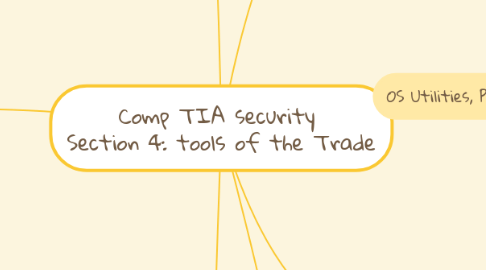Comp TIA security Section 4: tools of the Trade
by Emtenan saad


1. * there are many types of logs( event ,security, audit)
2. Logs
2.1. * Non-Network Events -Events that happen on a host even though it's not connected to a network.( date,Time,Process,account,Event number,Event description)
2.1.1. 1- Operating system events 2-Application events 3- Security events
2.2. * Network Events -Events that deals with the communication between the host and something on the network.( Time , sourc address(mac-IP) ,destination Description)
2.2.1. 1- OS-or system-level 2- application-level
3. Protocol Analyzers
3.1. Wireshark
3.1.1. 1-20years 2-powerful tool 3-free 4-specifically mentioned on the security +
3.2. * Sniffer:type of software-usually has name like Pcap-WinPcap -nPcap (grabbing all of the data that’s going in and out of a particular interface)
3.3. * Protocol Analyzers have two functions; sniffing and analyzing the data
3.4. * Wireshark allows us to filter the data by services and protocols
3.5. * Using dnetwork analyzer we can look closely at an activity taking place with that session
4. Network Scanners
4.1. * Nmap is useful for hardware inventory and reconnaissance of your system
4.2. * Nebwork Scans can be done to detect open ports, protocols, hardware and rogue systems
4.3. * Scans can be a resource intensive so plan accordingly to maintain system availability
5. OS Utilities, Part 2 :
5.1. * ipconfig provides the IP Address and ethernet details, and the -all option finds the MAC address
5.2. * nslookup provides information on the DNS server
5.3. Digg is a Linux utility that functions like nslookup, but Digg allows for further functionality
5.4. * Netcat can open and listen to ports, and be an aggressive tool for reconnaissance
6. OS Utilities, Part 1
6.1. * Netstat : let you know what session a particular host is running at any given moment
6.1.1. 1- netstat -n : let you know who you’re talking to 2- netstat - a : let you know who’s trying to talk to you
6.2. * tracert : ARP Address Resolution Protocol:
6.2.1. Tracert can help see what routers are being hit, both internal and external
